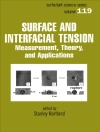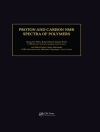The first comprehensive book to focus on ultra-high temperature ceramic materials in more than 20 years
Ultra-High Temperature Ceramics are a family of compounds that display an unusual combination of properties, including extremely high melting temperatures (>3000°C), high hardness, and good chemical stability and strength at high temperatures. Typical UHTC materials are the carbides, nitrides, and borides of transition metals, but the Group IV compounds (Ti, Zr, Hf) plus Ta C are generally considered to be the main focus of research due to the superior melting temperatures and stable high-melting temperature oxide that forms in situ. Rather than focusing on the latest scientific results, Ultra-High Temperature Ceramics: Materials for Extreme Environment Applications broadly and critically combines the historical aspects and the state-of-the-art on the processing, densification, properties, and performance of boride and carbide ceramics.
In reviewing the historic studies and recent progress in the field, Ultra-High Temperature Ceramics: Materials for Extreme Environment Applications provides:
* Original reviews of research conducted in the 1960s and 70s
* Content on electronic structure, synthesis, powder processing, densification, property measurement, and characterization of boride and carbide ceramics.
* Emphasis on materials for hypersonic aerospace applications such as wing leading edges and propulsion components for vehicles traveling faster than Mach 5
* Information on materials used in the extreme environments associated with high speed cutting tools and nuclear power generation
Contributions are based on presentations by leading research groups at the conference ‘Ultra-High Temperature Ceramics: Materials for Extreme Environment Applications II’ held May 13-19, 2012 in Hernstein, Austria. Bringing together disparate researchers from academia, government, and industry in a singular forum, the meeting cultivated didactic discussions and efforts between bench researchers, designers and engineers in assaying results in a broader context and moving the technology forward toward near- and long-term use. This book is useful for furnace manufacturers, aerospace manufacturers that may be pursuing hypersonic technology, researchers studying any aspect of boride and carbide ceramics, and practitioners of high-temperature structural ceramics.
Jadual kandungan
Acknowledgments ix
Contributors List xi
1 Introduction 1
William G. Fahrenholtz, Eric J. Wuchina, William E. Lee, and Yanchun Zhou
2 A Historical Perspective on Research Related to Ultra-High Temperature Ceramics 6
William G. Fahrenholtz
3 Reactive Processes for Diboride-Based Ultra-High Temperature Ceramics 33
Guo-Jun Zhang, Hai-Tao Liu, Wen-Wen Wu, Ji Zou, De-Wei Ni, Wei-Ming Guo, Ji-Xuan Liu, and Xin-Gang Wang
4 First-Principles Investigation on the Chemical Bonding and Intrinsic Elastic Properties of Transition Metal Diborides TMB2 (TM=Zr, Hf, Nb, Ta, and Y) 60
Yanchun Zhou, Jiemin Wang, Zhen Li, Xun Zhan, and Jingyang Wang
5 Near-Net-Shaping of Ultra-High Temperature Ceramics 83
Carolina Tallon and George V. Franks
6 Sintering and Densification MECHANISMS of Ultra-High Temperature Ceramics 112
Diletta Sciti, Laura Silvestroni, Valentina Medri, and Frédéric Monteverde
7 U HTC Composites for Hypersonic Applications 144
Anish Paul, Jon Binner, and Bala Vaidhyanathan
8 Mechanical Properties of Zirconium-Diboride Based UHTCs 167
Eric W. Neuman and Greg E. Hilmas
9 Thermal Conductivity of Zr B2 and Hf B2 197
Gregory J. K. Harrington and Greg E. Hilmas
10 Deformation and Hardness of UHTCs as a Function of Temperature 236
J. Wang and L. J. Vandeperre
11 Modeling and Evaluating the Environmental Degradation of UHTCs under Hypersonic Flow 267
Triplicane A. Parthasarathy, Michael K. Cinibulk and Mark Opeka
12 Tantalum Carbides: Their Microstructures and Deformation Behavior 291
Gregory B. Thompson and Christopher R. Weinberger
13 Titanium Diboride 316
Brahma Raju Golla, Twisampati Bhandari, Amartya Mukhopadhyay, and Bikramjit Basu
14 Th e Group IV Carbides and Nitrides 361
Eric J. Wuchina and Mark Opeka
15 Nuclear Applications for Ultra-High Temperature Ceramics and MAX Phases 391
William E. Lee, Edoardo Giorgi, Robert Harrison, Alexandre Maître, and Olivier Rapaud
16 UHTC-Based Hot Structures: Characterization, Design, and On-Ground/In-Flight Testing 416
Davide Alfano, Roberto Gardi, Luigi Scatteia, and Antonio Del Vecchio
Index 437
Mengenai Pengarang
William G. Fahrenholtz, Ph D, is Professor of
Ceramic Engineering in the Department of Materials Science and
Engineering at the Missouri University of Science and Technology.
He has authored or co-authored more than 100 publications in
peer-reviewed journals and holds four U.S. patents.
Eric J. Wuchina, Ph D, is currently a Senior Materials
Research Engineer at the Naval Surface Warfare Center, Carderock
Division and program officer in the Office of Naval Research with
responsibility for ultra-high temperature materials. He has
authored over 25 publications, 80 presentations (12 invited) and 4
patents.
Bill Lee, DPhil, is Professor of Ceramics, founding
Director of the Centre for Advanced Structural Ceramics (CASC) and
Director of the Centre for Nuclear Engineering at Imperial College
London. He has over 350 publications, including 4 books for which
he is lead or co-author, and has supervised 52 students to Ph D
completion.
Yanchun Zhou, Ph D, is Deputy Director of advanced
composite laboratory Aerospace Research Institute of Materials and
Processing Technology. Dr. Zhou has authored or co-authored more
than 300 publications in peer-reviewed journals, and holds 36
China patents.












